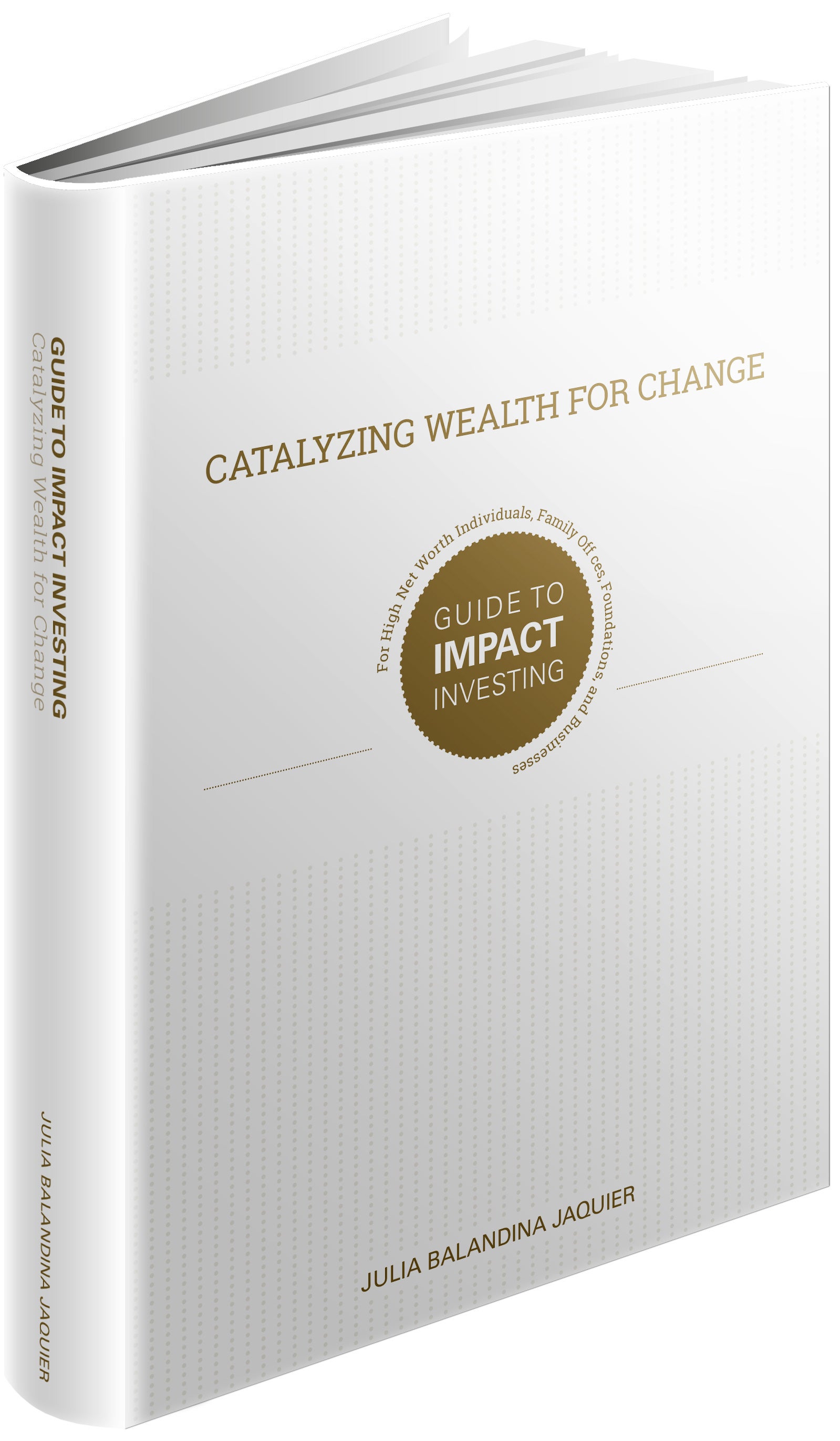 Socially responsible investing, corporate social responsibility and the various permutations of “doing well by doing good” are relatively recent arrivals to the modern business milieu. As such, early iterations of this ideology were often an afterthought, with investors putting just a little money into social impact funds. Companies did add social responsibilities to their practice, but kept oversight of such initiatives in divisions with limited power or stature.
Socially responsible investing, corporate social responsibility and the various permutations of “doing well by doing good” are relatively recent arrivals to the modern business milieu. As such, early iterations of this ideology were often an afterthought, with investors putting just a little money into social impact funds. Companies did add social responsibilities to their practice, but kept oversight of such initiatives in divisions with limited power or stature.
That’s changing. As the idea takes hold, there also arose a recognition that executing these initiatives well is neither easy nor straightforward. To educate new do-gooders, veteran impact investor Julia Balandina Jaquier has written the book, Catalyzing Wealth for Change: Guide to Impact Investing, to offer perspectives on how to tackle social responsibility endeavors. She recently spoke with Sherryl Kuhlman, managing director of the Wharton Social Impact Initiative, about her recommendations.
An edited transcript of the conversation follows.
Sherryl Kuhlman: Before we talk a little bit about the book and its contents, tell me about your background. What catalyzed your interest in this kind of work?
Julia Balandina Jaquier: I started in traditional companies, and traditional investing. About 23 years ago, I started with McKinsey & Co., but shifted to financial services pretty soon, working with ABB Financial Services, and then AIG. By 2001, I was managing the direct private equity business of AIG. It was in 2003 when I got to know the type of an investment approach that targeted a dual set of returns: financial returns and social returns.
Kuhlman: Which is not what you had been doing earlier.
Jaquier: Exactly. At that time, it wasn’t cool to impact invest, but it very quickly attracted my attention because I was searching for something that would be a purposeful career, and not just a traditionally successful career. Then I started an impact investment fund with AIG. I managed it for five years, and then moved on to start an independent advisory [firm], and worked with a broad range of ultra-high-net worth families around the world. I advised financial institutions, international banks and the Swiss and U.K. governments, on setting and implementing impact investment strategies.
Kuhlman: So you have a great background in the finance area then, and you’ve been part of the development of this field. How has that affected the content in your book?
“The interest in impact investing is very, very strong, and it continues to grow, particularly among the high-net-worth individuals.”
Jaquier: It has greatly impacted the content. What I have seen in the field is that the interest in impact investing is very, very strong, and it continues to grow, particularly among the high-net-worth individuals, wealthy families.
Kuhlman: Are you also seeing this kind of interest among millennials and the younger generations?
Jaquier: For younger generations, for millennials, it is absolutely normal; it’s a new normal for them. They talk about impact investing as something that is firmly part of their lives. But the interest in impact investing is not limited to millennials. We see a lot of wealth-holders, both from entrepreneurial backgrounds, and inheritors, who are drawn more and more to this innovative approach, which uses market forces and innovative entrepreneurial solutions to tackle very, very serious social, environmental challenges.
And the interest is there because people understand that we need private capital to address them. Government capital and philanthropy is no longer enough, and there is an excitement to go beyond grant-based philanthropy, where it can complement the grants by working with new actors of social change, which are the businesses and enterprises that pursue both societal objectives and financial objectives.
Kuhlman: That sounds just as inspiring. But how do you move from that inspiration to action? Because that’s the hard part.
Jaquier: It’s absolutely the hard part, and that is the reason for the book. A lot of research has been done that shows that wealth-holders absolutely adore this theme, and wholeheartedly want to invest their capital with values, with impact. The problem is that acting on this intention to generate impact with their investments has been very difficult. It is a much more complex area.
Families need to really find out what is the kind of impact they want to have, what kind of themes they want to tackle, what rate of return is appropriate. Is it too high? Too low? They don’t get a lot of help from their advisors, and as a result, there is a huge gap between the intention to do impact investing, and the actual action, and successful involvement in the field.
Kuhlman: One of the nice things about your guide is that it is a sophisticated blend of a toolkit and inspirational stories. Is there a specific story that you found really compelling that you like to talk about when you are talking to these families or giving lectures?
Jaquier: Well, I can’t think of one because this guide incorporates the findings from discussions and in-depth interviews with 190 families around the world. We actually profiled, in detailed case studies, 45 families from 21 countries. So they are very diverse. You learn a lot of things from all of them.
“Families need to really find out what is the kind of impact they want to have, what kind of themes they want to tackle, what rate of return is appropriate.”
Kuhlman: How does your book, your guide, your toolkit, differentiate itself from some other research and books that are out there?
Jaquier: What differentiates this guide is that it is really focused on triggering action, and not just providing inspiration. When I read the research and I get inspired, I say, “I want to know how! Yes! I want to do it, but how do I do it?” A lot of investors are at this stage, where they are convinced intellectually, but they don’t know how to start, and whom to trust.
This guide is set up in a way that will help those who are already convinced that they want to try to be meaningfully involved. It provides a lot of peer examples, and case studies, 45 of them, which were selected from 167 in-depth, face-to-face interviews with families around the world. It has practical step-by-step guidance in all of the stages of involvement in impact investing, from understanding what it is, understanding how peers have used this approach, be it a foundation, a family business or a next-gener, and then, developing a strategy, getting your family on board with it, and then actually starting doing investing.
It’s a really hands-on approach, peer-learning, and adaptive style. No jargon and no financial language, which will help people with different levels of financial sophistication and experience in investing to get the benefit of it and start doing it.
Kuhlman: You talk about the people using this right now being the wealth-holders themselves. I’m trying to understand how they might approach this. What role do advisers play in these sorts of decisions?
Jaquier: One of the learnings from all of those interviews is that advisers play an absolutely critical role in this area. Like philanthropy, which a lot of families like to do by themselves, many families want to work with their traditional financial advisers in helping them align their wealth with their values. Because it is a complex field, it requires financial experience. Some wealth-holders don’t have this experience. The others just don’t have time because they are involved in their family businesses. They don’t have time to really get entangled into the nitty-gritty of the actual investment. And also they want to work with credible advisers who can influence the patriarchs and the matriarchs of the businesses, and get the buy-in from the older generation, and those who already have credibility within the family.
“Impact investing … is also thinking of yourself as a catalyst within the organization.”
Kuhlman: What do you think the resistance level might be on the part of advisers? For an adviser, setting impact investing as a goal for a client might not be an easy thing to move into. What kind of advice do you give to the advisers?
Jaquier: To advisers, I would say that it is a tremendous opportunity for them to step up and help their clients holistically integrate this into their portfolios — in different approaches, in different ways. There are a lot of things that make it naturally a bit difficult for advisers. There is some what I call myth that they have in their prejudices that prevents engagement.
First, it’s a complex field; they need to come to grips with what it is. Very often, advisers think that impact investing is equivalent to another type of philanthropy, where you would need to sacrifice returns, or actually even lose capital. They also think that they need to have the full range of products to offer their clients to be credible, and be mission-aligned themselves, which is not necessarily true. What clients want is for advisers to be their partners, and open up this topic, discuss what is possible, to have the understanding that there is a desire to generate impact, and make a difference with their clients’ capital.
Kuhlman: One of the things we see here at the university is strongly increasing interest in this. We are working to train the next generation of investors and advisers. What kind of advice would you give to a recent graduate who looks at this and says, “Well, I’m not yet an adviser, I’m not part of the family wealth generation, but I would love to get involved with this.” What are your suggestions around that?
Jaquier: We all are investors at a certain level, and there are products currently in the market where you can invest as little as $500. For example, in Calvert’s Community Investment portfolio, there are products that are available for retail investors. And trying to put yourself in the shoes of the investor with little capital, as you are prepared to do, is actually good. There are also investment clubs where you can invest in social enterprises with a little amount of money. So that’s one side.
Another side is that I would encourage students to think more broadly about impact investing. Impact investing is not only directly placing capital within impact-generating enterprises. It is also thinking of yourself as a catalyst within the organization where you work already, in creating these dual-objective strategies. For example, businesses and corporations can play an important role in impact investing, not only by investing in social enterprises, but creating strategies within the corporation, which generate commercial return and social impact.
For example, they can do this by creating an inclusive supply chain, or developing products and services for the disadvantaged populations, innovating with their supply chain, innovating with their products, or innovating with the delivery models. All this can be done within conventional businesses. The same with pension funds and institutional investors. The key is being an agent of change, wherever you are — consulting companies, provider of services — because impact investing at the end, has a larger ecosystem, and a lot of services are needed to support this market, not only investing directly.
“The key is being an agent of change, wherever you are.”
Kuhlman: One of the things that your discussion points to is that this area will be strengthened as more people come to see it is potentially a part of something that anybody can do — that it is something that corporations can start looking at, or pension funds, entrepreneurs, investors, philanthropists. That it is part of creating a larger ecosystem that balances both profits and purpose.
Jaquier: Absolutely. I think that you’ve phrased it very well. I think what we see in the world is a convergence. Businesses become closer to charities; they incorporate impact dimension in their operations. Charities become closer to businesses; they start for-profit social enterprise arms, they need to generate revenues, they want to embrace market-based solutions. In this converging world, you can find your place in a large number of institutions.
Kuhlman: A question then about accountability and transparency: When you’re talking about businesses integrating the social impact aspect, we think it is now very different from the traditional idea of corporate social responsibility, or the kind of marketing and philanthropy that corporations do. It is more successful when it is integrated into the business itself, and not seen as an add-on. Do you think more corporations are learning how to be authentically and transparently involved in social impact?
Jaquier: I think so, because I think there is a larger appreciation and awareness among the CEOs, and among the corporations, that the social and environmental challenges we are facing provide risks and opportunities, but that all of us will have to bear the consequences. So it is important that private capital steps up and develops strategies that tackle those challenges, while simultaneously providing the business value.
This is the shared-value approach of Michael Porter. I really love this, because it is over-embracive, and it is really inclusive, where you would say that this is the way to go, because corporate social responsibility, it’s always going to be little pockets that may not be taken seriously. But it will not be as impactful as a holistic strategy, which generates profitability at the same time as tackling the social and environmental challenges.
Kuhlman: One thing we look for when we are looking at a corporation is where the responsibility lies for the corporate social impact aspect. If it’s under the marketing department, or if it’s under community affairs, it often has less influence in the business than if it’s in one of the profit centers.
Jaquier: Absolutely. I think corporations — and particularly, family-owned businesses — now see that the creation of shared-value businesses or shared value initiatives becomes an imperative to attracting talent, and assuring succession from the family members. Because the next-geners want to see their family business as an engine of social change, a positive one, they want to know how the money is made, not only what you do with the money later on. They want to align the way their family business works with their values, with the values of the family. So I think there is a huge opportunity there.
Kuhlman: What kind of trends do you see among the wealth-holders as you are doing your research and thinking about these issues?
Jaquier: There are a couple that I can think of. First of all, that impact investing is really a tool, which can be used to generate impact, to safeguard wealth, and manage it well, but also to tackle a number of personal and strategic objectives that families face. Many families get excited about impact investing because they see that it could be a glue that keeps the generations of family members together, particularly after the sale of the family business, for example. It could be a tool to educate the next generation about responsible wealth management, and assure that they can find a productive place in society.
It can also be a way of transferring wealth with values, and preserving the culture of the family. The longevity of the family business is also an important thing. But also, families more and more think that impact investing is in many cases a more effective way of giving back than traditional grants, where they sometimes get a bit worried that maybe the long-lasting, tangible, and scalable impact is not necessarily happening. And they are very much excited about market-based solutions, and supporting those models that can not only alleviate suffering, but really create a systemic change. I think this awareness, and this focus on systemic change, is really well seen.
Another trend that I see is a trend towards integration. In the early stages of impact investing, the involvement of families used to be more like a carve-out: “We will do it with part of the assets.” But nowadays, a lot of families are thinking that they want to have impact be a prism through which they will look at all the financial decisions that they will make. And therefore, they will integrate different types of approaches — responsible investing, sustainable investing, impact investing — in order to achieve a holistic, larger impact with their wealth.



